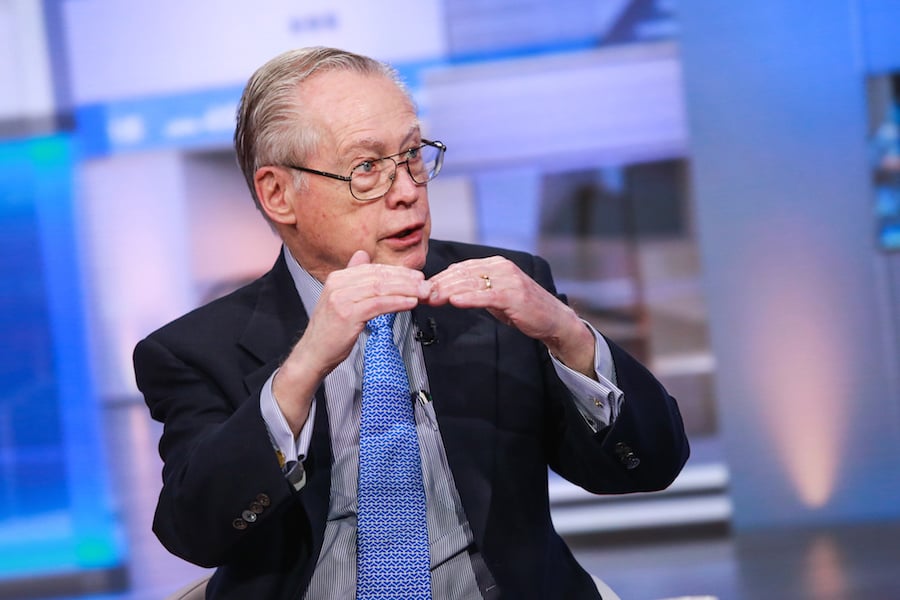With the fallout from cheap oil inflicting pain on the high-yield bond market, a lot of bond fund managers are getting busy shedding or trying to hide their junk bond exposure.
Then there's the $16 billion Loomis Sayles Bond Fund (LSBDX), which is embracing a contrarian view, warning investors that there will be volatility — and investing opportunities.
“We think it's a good time to buy high-yield bonds,” said Matthew Eagan, who co-manages the fund along with Daniel Fuss and Elaine Stokes.
Mr. Eagan makes no apologies for a 28% allocation to the high-yield bond market, pointing out that the fund's mandate enables it to go to 35%.
“We always have high-yield in this fund, but the focus is on security selection,” he said. “Through the full cycle you will get paid, and you'll earn a nice risk premium.”
The emphasis is clearly on the full cycle, because anyone looking at this 25-year-old fund in snapshots of time may think twice about the sector.
VOLATILITY RISK
This year, through Friday, the fund is down 3.57%, which compares to a 1.33% drop from the Morningstar multi-sector bond fund category, and a 0.97% gain for the Barclays Aggregate Bond Index.
Last year the fund dropped 6.86%, while the category fell 2.18%, and the Barclays gained 55 basis points.
To better illustrate how this portfolio management team will go after returns, consider the fund's 21.82% drop in 2008, while the category lost 15.41%, and the Barclays gained 5.24%.
But the fund bounced back in 2009 with a 37.19% gain, compared with a category gain of 29.22%, and a Barclays gain of 5.93%.
In fact, 2015 was the first year the
fund lagged the category since 2008.
“The fund is managed and built to handle a relatively high standard deviation, and we're willing to experience some volatility,” Mr. Eagan said. “You take some volatility risk, but you are rewarded for that.”
ENERGY SECTOR
Even though the fund has a lot of junk-bond exposure, particularly for a fund without the words “high yield” in its name, Mr. Eagan said the total allocation to the energy and commodity space is only about 6%. He believes the high-yield space in general is being hit by the association to the struggling energy sector, which adds up to a value play for anybody with nerves of steel.
“I view this as the commodity space being in a severe correction, but there's also a lot of value and opportunity for people who can pick bonds,” he said. “I would characterize the commodity space as a value proposition, but you have to have a view on the direction of oil prices.”
Perhaps not surprisingly, Mr. Eagan's view on oil prices is also contrarian to much of the broader market.
At less than $29 a barrel,
the price of oil has fallen more than 80% from the 2008 peak of $148. The U.S. shale boom that took off when prices were still high was financed in large part by a junk-bond bonanza that tilted the high-yield bond space disproportionately toward commodities and energy debt.
To fully grasp the
pain inflicted on the high-yield bond space by the energy sector, consider that high-yield bonds, as a broad category is yielding over 9%. If you strip out the energy-sector bonds, the yield is still around 7.5%.
“That's a lot of yield for a [non-energy] area where there aren't going to be a lot of defaults in that space, unless you think the U.S. is going into recession,” Mr. Eagan said.
OIL RECOVERY?
In terms of the fund's energy exposure, he is betting on an oil-price recovery that pushes the price to $55 by year-end.
“If oil recovers to $55, a lot of the companies will survive,” he said. “You need to focus on the names with the liquidity and financial flexibility to face the next 12 to 16 months, when I personally think oil will be higher.”
Todd Rosenbluth, director of mutual fund and ETF research at S&P Capital IQ, said investors in this fund should recognize that it is not afraid to take big bets.
“This fund is going to be more volatile than its peers,” he said. “The performance will swing higher and lower in up-and-down markets.”
One thing investors in any bond fund should understand is that relying on the Barclays Aggregate Bond Index as a benchmark can be deceiving, Mr. Rosenbluth explained.
“The Barclays has zero exposure to high-yield bonds, bank loans, and non-U.S.-dollar denominated bonds,” he said. “This fund is vastly different from the index, and that means there are times when the performance will be vastly different from the index. The fund is taking on greater risk than the index and many of their fund peers.”
While Mr. Rosenbluth described the Loomis Sayles fund as a “fund that will do well when high-yield bonds do well,” Mr. Eagan believes a high-yield recovery is around the next corner.
“If you look at the cadence of the fund, you'll see there are periods when we'll underperform by quite a bit, because there are some markets when our strategy is out of favor,” Mr. Eagan said. “We always have more risk than those indices, and those draw-down periods is when we do our best buying.”







